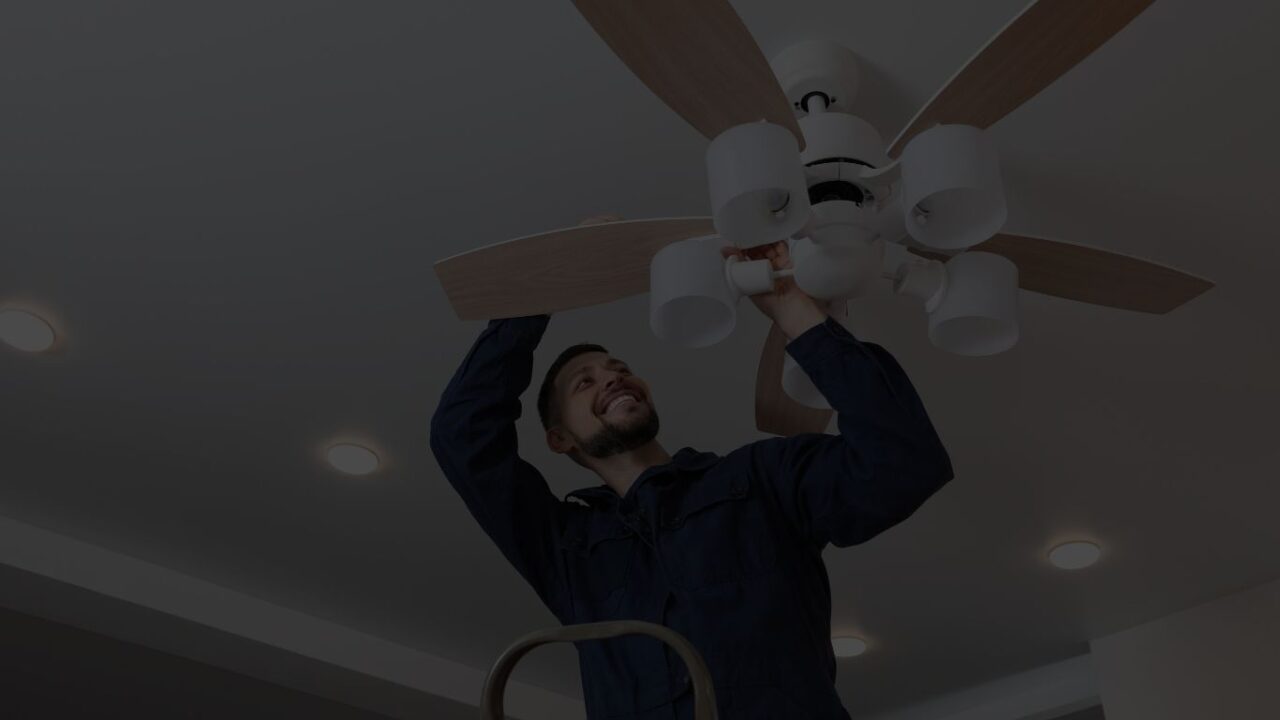Getting the height right on your ceiling fan isn’t just about looks — it’s about comfort, airflow, and safety.
Mount a fan too high, and you’ll barely feel a breeze. Too low, and you’ll risk bumped heads or poor circulation. For most homes in Northeast Ohio, the blades should sit 8–9 feet above the floor for the perfect mix of safety and performance.
Why Ceiling Fan Height Matters
A ceiling fan works by moving air in a wide, gentle column — not just directly beneath the blades.
If the fan is too close to the ceiling, it can’t pull enough air to push down into the room.
If it hangs too low, the air churns in a smaller circle and loses efficiency.
Getting the mounting height right ensures even airflow, quieter operation, and a room that just feels “right.”
The General Rule of Thumb
-
Keep blades 8–9 feet above the floor.
This height gives the best air movement and keeps everyone safe, even in high-traffic rooms. -
Maintain at least 7 feet of clearance.
This is the minimum allowed by most building codes and helps avoid any close calls with taller guests. -
Leave 10–12 inches between the ceiling and the top of the blades.
Fans need space to draw in air — crowding them too close to the ceiling reduces efficiency.
Matching Fan Mounts to Ceiling Heights
| Ceiling Height | Recommended Mount Type | Downrod Length |
|---|---|---|
| 8 ft | Flush-mount / “hugger” | None |
| 9 ft | Standard mount | 6″ |
| 10–12 ft | Extended downrod | 12–24″ |
| Vaulted ceiling | Downrod + angled bracket | Varies |
Flush-mount (hugger) fans keep blades safely high on low ceilings.
Downrod fans lower the blades into the “sweet spot” for airflow on taller or vaulted ceilings.
Pro tip: For sloped or vaulted ceilings, always use an angled-mount bracket so the fan hangs straight. A crooked fan wobbles more, wears out faster, and just looks wrong.
Safety and Style Go Hand in Hand
Height affects more than airflow — it also changes how the fan looks in your room.
Fans mounted too high can disappear visually, while those that hang too low dominate the space.
Keeping that 8–9-foot sweet spot keeps your room balanced and open.
Quick reminder: Before buying, measure not just the ceiling height but also door swings, beams, and light fixtures nearby.
Nothing ruins a good install faster than realizing your new fan blocks a door or a cabinet.
And yes — warn your tall friends before they walk in. No free haircuts here. 😄 Even if you have a smart fan, dumb actions can still get you hurt.
When in Doubt, Ask a Pro
If your home has odd ceiling heights, sloped architecture, or older wiring, it’s worth having a professional inspect your setup before installing.
We can measure clearances, select the right downrod length, and make sure your fan box is strong enough to handle the weight and vibration of a new fixture.
Final Thought
A ceiling fan isn’t just decoration — it’s a comfort system that depends on correct installation.
A few inches up or down can make all the difference between a fan that hums and one that truly works for your space.
Need help? Colin Can Help installs, replaces, and adjusts ceiling fans throughout Northeast Ohio — safely, cleanly, and always at the right height.

